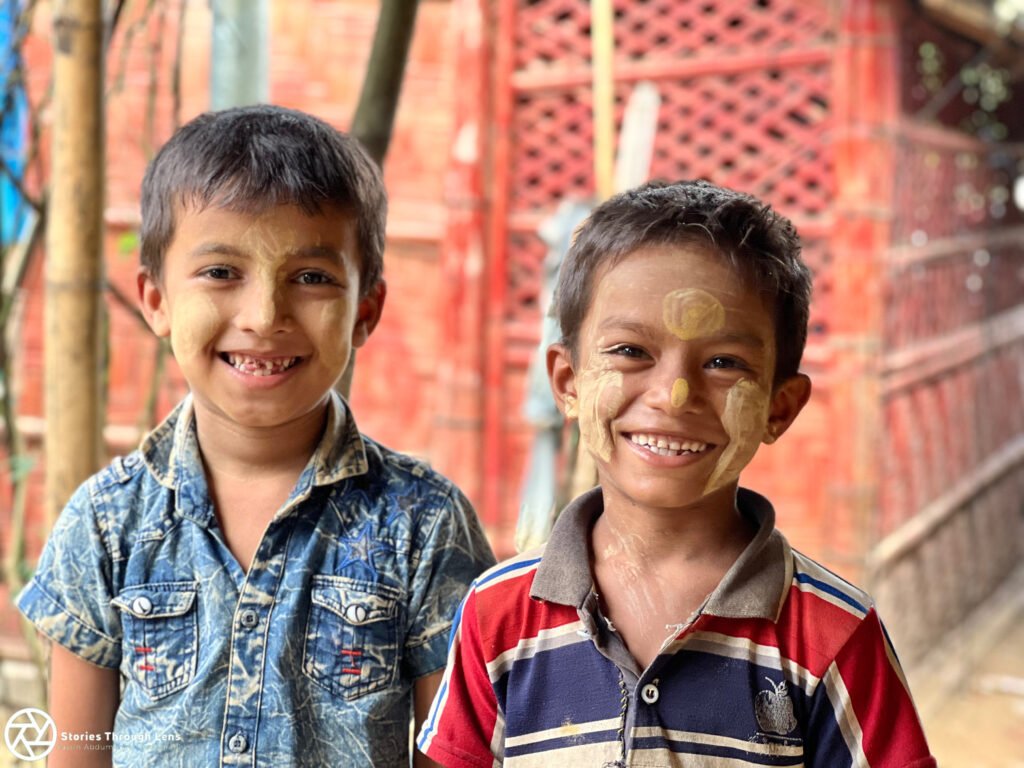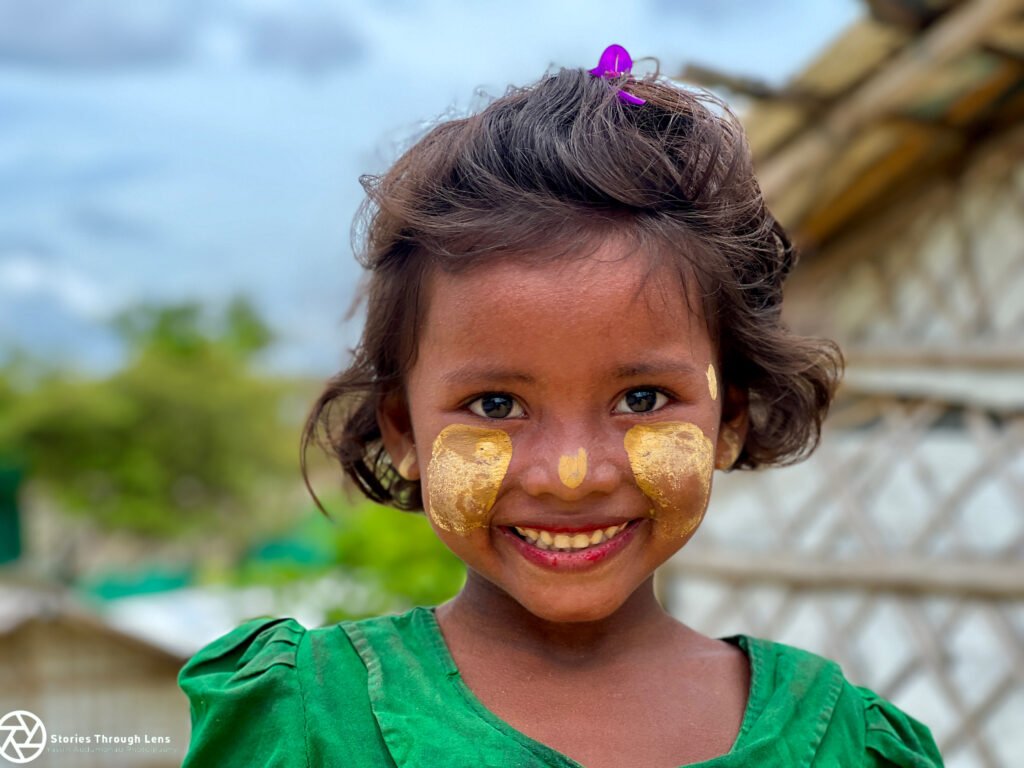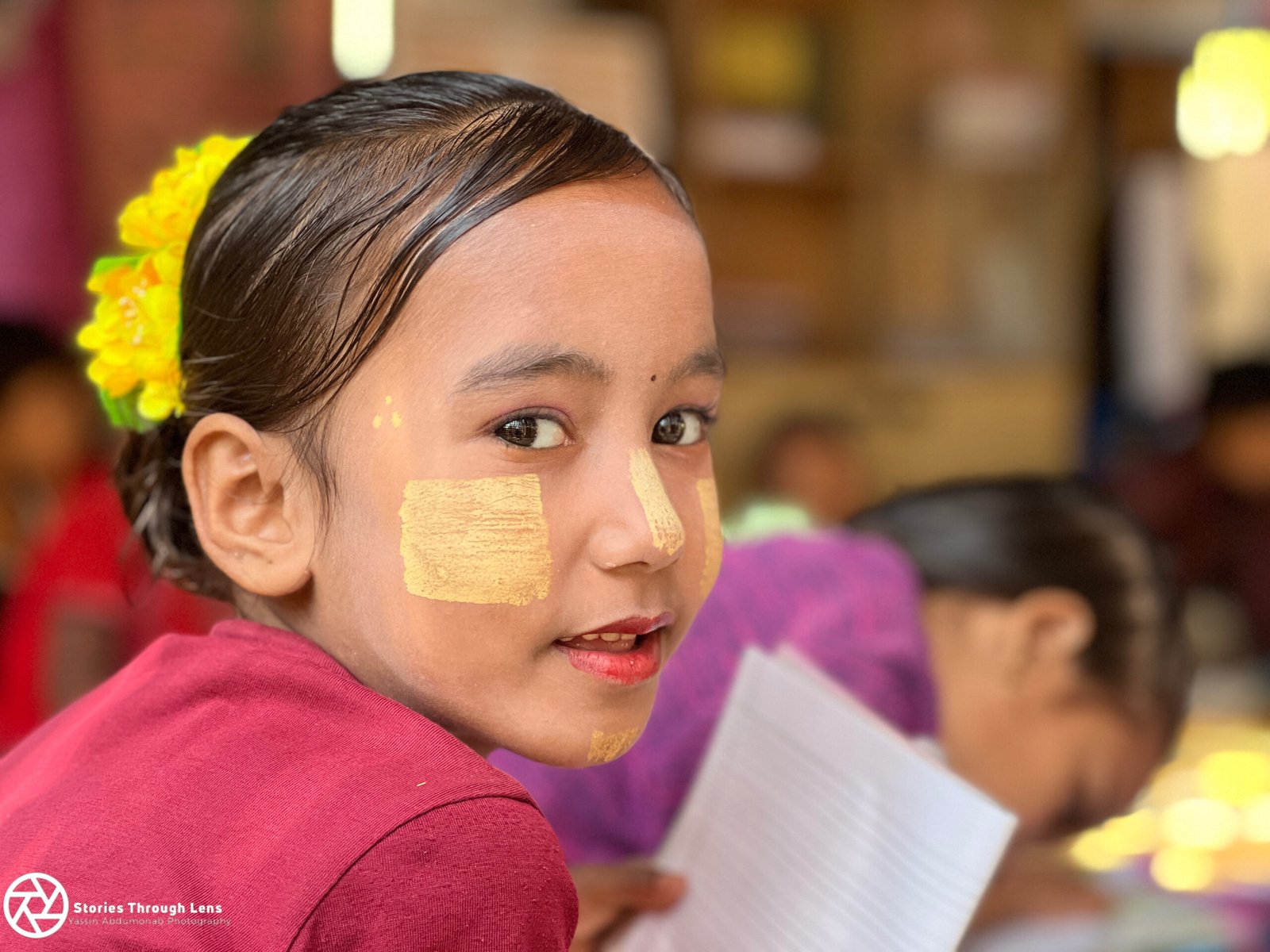Thanakha, a cultural jewel of Myanmar, not only graces the faces of its people but also transcends borders to neighboring nations, and its significance goes beyond beauty. Even in the refugee camps of Bangladesh, Thanakha serves as a potent symbol of cultural preservation and an enduring love for Myanmar.

In Myanmar, Thanakha has long been an integral part of the culture. This fragrant paste, made from the bark of the Thanakha tree, is applied to the skin as a cosmetic and sunscreen. It is also an art form, with women and girls using it to paint intricate designs on their faces. Beyond aesthetics, Thanakha offers a cooling and therapeutic effect for the skin.
The practice of using Thanakha has spread to neighboring countries like Thailand and Cambodia, where it’s embraced for its unique beauty and skincare benefits. This cross-cultural appeal is a testament to Thanakha’s timeless charm.

In a poignant twist, even among the Rohingya refugees living in crowded and challenging conditions in Bangladesh, Thanakha plays a crucial role. For many, it’s not just a cosmetic but a symbol of cultural resilience and a connection to their homeland, Myanmar. The Rohingya people have faced immense hardships, but their use of Thanakha in the camps is an act of preserving their culture and identity. It’s a poignant reminder of the indomitable spirit that binds them to their roots.

Thanakha’s journey from the heart of Myanmar to refugee camps in Bangladesh is a powerful narrative of cultural continuity. It stands as a symbol of the unbreakable connection people have to their heritage, even in the most adverse circumstances. This fragrant paste, with its rich history and multifaceted significance, continues to transcend borders, bringing people together in a shared appreciation for cultural heritage and a deep love for their homeland.

People like to put Thanakha for several reasons:
- Cosmetic and Aesthetic Appeal: Thanakha is often used as a cosmetic to beautify the skin. It’s applied in various patterns and designs, especially by women and girls in Myanmar, as a form of decoration. The designs can be intricate and artistic, enhancing one’s appearance.
- Sun Protection: Thanakha serves as a natural sunscreen. The paste creates a protective barrier on the skin, shielding it from the harsh rays of the sun. This is particularly important in regions with intense sunlight like Myanmar.
- Cooling Effect: The application of Thanakha provides a cooling sensation. It is refreshing, making it particularly popular in hot and humid climates.
- Therapeutic Properties: Thanakha is believed to have therapeutic qualities. It is used to soothe various skin conditions, and its natural ingredients are thought to have healing properties.
- Cultural and Tradition: Using Thanakha is a deeply ingrained cultural tradition in Myanmar. It’s a way of connecting with one’s heritage and celebrating the country’s rich cultural history. The intricate patterns also reflect a sense of pride and identity.
- Cross-Cultural Appeal: The appeal of Thanakha has transcended national borders. It is used by people in neighboring countries due to its beauty and skincare benefits, illustrating its cross-cultural popularity.
In summary, Thanakha offers not only cosmetic and skincare benefits but also a deeper cultural and traditional connection for those who use it. Its multifaceted nature makes it a beloved and enduring aspect of beauty and culture in Myanmar and beyond.



